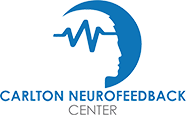A certain amount of decline in memory and cognition is normal as we age, but too much can disrupt your life. It can make you feel socially awkward, and embarrassed around those you care about. If you can’t follow the thread of a conversation, it can make it difficult to maintain ties with friends and loved ones. At the extreme, it can lead to depression and social isolation.
But, there is hope!
For older adults and others who struggle with memory loss and cognitive decline, Neurofeedback training is a promising approach that can re-train your brain, making it more efficient. This specialized form of biofeedback has been around for decades, and “exercises” your brain, using “operant conditioning” to create new, healthier neural pathways for you to use. If forgetfulness and confusion have been making a regular appearance in your life and you’re ready to turn it around, neurofeedback can be an effective solution, according to recent studies: Tuning Up The Old Brain With New Tricks
Does my brain need a tune-up?
Just as you would exercise your body, your brain can benefit from neurofeedback training to help it function more optimally. When someone has memory problems and/or cognitive impairment, parts of the brain may be misfiring and not working in coordination as well as they had in the past.
To begin neurofeedback training, the certified provider will obtain a “brain map” (technically called a quantitative electroencephalogram or qEEG). This in-office, non-invasive test, which takes about half an hour, makes it easy to observe patterns of brainwaves. This is how areas of dysregulation or disorganization, which can affect symptoms of memory loss, can be identified in your brain.
How does Neurofeedback Training work?
Neurofeedback training is a type of biofeedback where the training is based on the actual neural outputs of each individual. A course of treatment, which varies depending on the severity of the symptoms and an individual’s response, may last several weeks or a few months. Each appointment lasts about 30 minutes and involves sitting in a comfortable chair and observing a video while small sensors measure your brainwave activity. Each training session is different from one person to the next since the brainwave output is also different from person to person. The feedback is given in the form of changes in the audio and visual input – the video will change in clarity if the brain is “out of its optimal range” while the patient is training.
Neurofeedback Training can produce long-term change.
Unlike medications, which must be taken over and over to relieve symptoms, neurofeedback training is a type of learning. This means that once your brain has developed new, healthier pathways, it continues to use them from that point forward. It’s a lot like learning to swim – once you learn, you’ll always remember what to do when you dip your head underwater. Neurofeedback results in the same type of long-term neural change, allowing you to remain healthy for years to come!
Where can I get help?
If you want to explore neurofeedback training for yourself or a loved one, contact Dr. Ed Carlton at Carlton Neurofeedback Center in Manassas, Virginia, for a Complimentary Evaluation.
He’s not only a trained practitioner but has experienced neurofeedback’s effects firsthand. Read his story and download his eBook to learn more about how neurofeedback training can help relieve brain-based conditions, including mild cognitive declines, forgetfulness, dementia, and Alzheimer’s disease.


